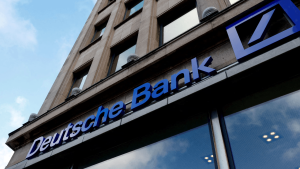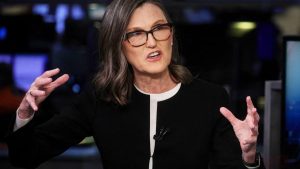Businesses show interest in Web3, despite US regulatory challenges

Consensus, the annual crypto and blockchain conference, attracted over 15,000 attendees, 220 sponsors and 410 speakers to its 2023 edition in Austin, Texas, despite recent regulatory struggles around cryptocurrency adoption in the United States.
The turnout at Consensus 2023 demonstrated that U.S.-based companies and international organizations are still very much interested in implementing Web3 technology into their business models.
Caitlin Long, founder and CEO of Custodia Bank — a Wyoming-based digital asset bank — told Cointelegraph that the conference attracted serious ecosystem participants, saying, “We’ve seen during crypto winters before where Consensus gets overrun with high time preference people and companies (for example, multiple Lambo’s parked out front of the New York Hilton in 2018), and in bust years the low-time preference people and companies just keep building. This year was the latter.”
ADIOS AUSTIN! This was my fave #Consensus conf since 2017—by my guess it had the highest % in attendance of fellow “low-time preference peeps on principled missions” since that year. Huge thanks to everyone who showed your support—it was like a great big warm hug! Safe home! pic.twitter.com/NOPmU03VAV
— Caitlin Long ⚡️ (@CaitlinLong_) April 29, 2023
Businesses discuss Web3 strategies
Several large organizations were present at Consensus 2023, with Mastercard, Google, Robinhood and Coinbase, among others, gathering to discuss their Web3 strategies.
James Tromans, head of Web3 at Google Cloud, told Cointelegraph about some blockchain-based initiatives the company has recently launched.
“At the end of last year, Google Cloud announced Blockchain Node Engine, which allows users and developers to run an Ethereum node without having to manage or support it themselves,” he said.
Recent: Will compromise on anonymous crypto appease US regulators, spur adoption?
At Consensus, the firm announced that it had expanded support for the Blockchain Node Engine to Polygon proof-of-stake, in addition to Ethereum.
Tromans added that Google Cloud knows what Polygon has been doing in the zero-knowledge (ZK) space, noting that Polygon ZK Ethereum virtual machines (zkEVM) and Polygon supernets will benefit from the provision of Google Cloud’s infrastructure and developer tools.
Moreover, Tromans pointed out that Google Cloud’s startup program will help onboard companies interested in building on Web3 using existing Google Cloud products. “Polygon is an important part of this initiative, as they have provided a $3 million contribution from their venture fund to get this off the ground with us,” he said.
Global financial services giant Mastercard announced its “Mastercard Crypto Credential” solution during Consensus. Raj Dhamodharan, head of crypto and blockchain at Mastercard, stated during a fireside discussion at Consensus that he is “excited about the underlying potential of blockchain technology” due to its ability to store and move value seamlessly.
However, Dhamodharan explained that “this potential is not fully realized today,” so Mastercard has started working on several products like Mastercard Crypto Credential.
“I believe that once you have the right building blocks necessary for safety and simplicity, you can have more businesses building and relying on the basic utility of storing and moving value,” Dhamodharan said on stage.
Conversations continued at side events
While there were 10 dedicated stages for 285 panels during Consensus, many side events allowed important conversations to continue outside of the conference.
For example, zero-knowledge proofs (ZK-proofs) were widely discussed at Consensus, but in-depth conversations around ZK-proofs took place at the “ZK360” event hosted by Mina Protocol. Evan Shapiro, CEO of the Mina Foundation and co-founder of the Mina Protocol, told Cointelegraph that the goal of ZK360 was for attendees to learn about the latest advancements in ZK-proofs and how these can be applied in the real world. “Web3 needs both privacy and verified computation. ZK-proofs provide both of those at a time when applications are needing these features to be more effective, decentralized and scalable,” he said.
Other layer-1 blockchain networks like Ripple and Algorand hosted side events, allowing Consensus attendees to better understand specific blockchain offerings while networking with community members. These events also presented an opportunity for non-Consensus attendees to learn about important topics within the Web3 sector.
Lacking an international presence
While the turnout during Consensus 2023 was notable, some industry experts highlighted that the conference lacked an international presence.
Yat Siu, chairman of Animoca Brands — a venture capital company focused on blockchain-based games — told Cointelegraph that regions in Asia like Japan and Hong Kong are offering a progressive and welcoming regulatory environment for crypto adoption. He noted that most people he spoke with at Consensus seemed surprised or even skeptical at this. He said:
“I think that a larger presence of overseas participants would have helped allow Consensus participants to better understand the scope of excitement and opportunity that exists outside of the United States. I would love to see a stronger international presence at Consensus next year.”
Despite this, Siu said that Consensus 2023 was a well-attended, high-energy conference overall. “I was surprised at the level of deal-making activity that was taking place, even if the narrative was that the U.S. was negative on crypto,” he said.
Magazine: How to control the AIs and incentivize the humans with crypto
Echoing Siu was Keith Grossman, president of enterprise at MoonPay. He told Cointelegraph that he was impressed to see so many executives from some of the largest companies in attendance at Consensus. “Deals were being discussed, and I believe we will look back at Consensus 2023 recognizing it represented a maturation in the industry as it relates to how Web3 technologies can be deployed in a meaningful manner for businesses and their customers.”















